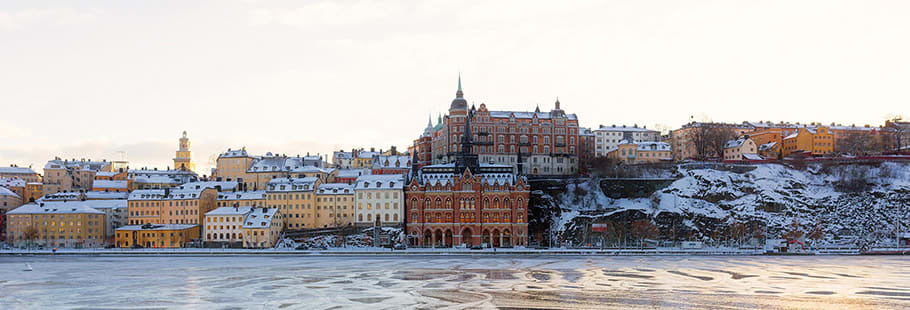Where 2018’s Nobel Prize Winners Found Their PhDs
This year’s Nobel Prize winners have now all been announced. The prestigious awards are bestowed upon scientists and thinkers for their pioneering and exceptional work that “confers great benefit to humankind”. It’s the ultimate accolade for any academic or intellectual.
We’ve taken a look at where 2018’s Nobel Laureates completed their postgraduate degrees.
Who knows, maybe the search for your own postgrad degree could be the first step to joining the ranks of these great minds . . .
This year’s award has been given to Arthur Ashkin, Gérard Mourou and Donna Strickland for their work developing “ground breaking inventions in the field of laser physics”.
Askhin invented ‘optical tweezers’, which use the pressure generated from pulses of laser light to move tiny objects, including particles, DNA, and even living bacteria. These laser tweezers can be used to study many biological processes and the miniature components that make up living cells.
Mourou and his PhD student Strickland were able to develop a way of creating very short high-intensity lasers (this was Strickland’s PhD project!). This technique creates very sharp laser beams that are regularly used in all sorts of applications, such as studying sub-atomic particles and even eye surgery.
These ‘tools made of light’ are now regularly used in laboratories around the world, with more applications still being discovered.
PhD in Physics, Cornell University (1952)
PhD in Physics, Pierre and Marie Curie (Paris VI) University (1973)
PhD in Physics, University of Rochester (1989)
The 2018 Nobel Prize in Chemistry has been awarded to Frances H. Arnold for “the directed evolution of enzymes”, and George P. Smith and Sir Gregory P. Winter for their work on “phage display of peptides and antibodies”.
Living things can develop increasingly better tools to adapt to their surroundings through evolution. Arnold pioneered harnessing the power of evolution and directed it by manual selection to get bacteria to create better molecule-sized machines called enzymes that can perform all sorts of chemical reactions.
Smith developed a technology that helped to identify the genes that encode the information to make proteins. The ‘phage display’ technology tricked bacteria viruses into producing protein from a library of genes, and using antibodies made it possible to ‘fish out’ the target protein and determine which gene encodes it.
Winter was able to combine Arnold’s directed evolution and Smith’s phage display to produce large libraries of tailor-made antibodies which can be used to treat diseases like cancer and arthritis.
The Physiology or Medicine Prize went to James P. Allison and Tasuko Honjo for “their discovery of cancer therapy by inhibition of negative immune regulation”.
Our bodies have immune systems that attack invaders to protect us. They have a ‘braking’ mechanism that stops the immune system from getting carried away and attacking our own cells. This ‘braking’ is controlled by two proteins called CTLA-4 and PD-1. Allison experimented on blocking CTLA-4, and in parallel experiments Honjo blocked PD-1, to unleash the immune system to attack cancer tumour cells.
These discoveries are promising developments for cancer therapy.
The Nobel Prize in Literature this year has been postponed, so instead we’ll look at 2017’s Nobel Laureate Kazuo Ishiguro “who, in novels of great emotional force, has uncovered the abyss beneath our illusory sense of connection with the world”.
The Japanese-born Briton has played with different genres in his seven-novel career so far, each with careful beauty, understatement, universal truths, and consistent quality.
His most famous works are A Pale View of the Hills, The Remains of the Day, and Never Let Me Go.
The Nobel Peace Prize for 2018 goes to Denis Mukwege and Nadia Murad for “their efforts to end the use of sexual violence as a weapon of war and armed conflict”.
Mukwege has dedicated his life to supporting the victims of sexual violence in the Democratic Republic of Congo. At the Panzi Hospital founded by Dr. Mukwege, thousands of survivors of sexual violence in world conflicts are cared for. Mukwege also works with sexual assault victims and governments as an advocate for ending global wartime sexual violence.
Murad is a victim of sexual violence, and a survivor of the genocide against the Yazidi population in northern Iraq in 2014. She managed to escape and come forward to serve as witness to these atrocities. At the age of 23, she served as the first Goodwill Ambassador for the Dignity of Survivors and Human Trafficking for the UN and continues to be a fierce activist for the rights of victims of trafficking and genocide.
Both Nobel Laureates have risked their lives to combat war crimes and fight for justice for the victims of sexual violence.
And finally, the winners of the Nobel Prize for Economic Sciences are William D. Nordhaus and Paul M. Romer for “integrating innovation and climate with economic growth”.
Nordhaus examined the relationship between human activity and climate in terms of economics, looking at how climate and economy co-evolve. He developed models to integrate nature into the market economy and addressed different potential scenarios and interventions that may develop as our global economic-climate system changes.
Similarly, Romer integrated technological development into new economic models. He studied how favourable market conditions can stimulate technological change, contrary to idea that technology fosters economic growth. His research brings insights into what economic institutions and policies can help create profitable technologies.
Together, these two Nobel Laureates have broadened the field of economic analysis to reflect how nature and knowledge affect the market economy.
PhD in Economics, Massachusetts Institute of Technology (1967)
PhD in Economics, University of Chicago (1983)
Feeling inspired to find a PhD?
Our newsletter will keep you updated on the latest opportunities.

 Continue with Facebook
Continue with Facebook





